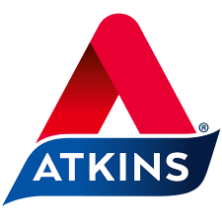- Get inspired
- Atkins Blog
- Fat is your friend
So how can fat make you thin? Along with protein, fat helps make you feel full. And because fat carries flavor, it makes food more satisfying. It takes twice as many calories from refined carbs than from fats to provide the same level of fullness, which makes fat a better choice if you want to lose weight.
It’s Pop Quiz time!
Question: When eaten in large amounts, which raises your blood levels of saturated fats and triglycerides and lowers your HDL (“good”) cholesterol: Fat or Carbohydrate?
Answer: You may be tempted to answer “Fat”. But the correct answer is “Carbohydrate”!
So how can fat make you thin? Along with protein, fat helps make you feel full. And because fat carries flavor, it makes food more satisfying. It takes twice as many calories from refined carbs than from fats to provide the same level of fullness, which makes fat a better choice if you want to lose weight. Dietary fat also slows the entry of glucose into the bloodstream. This keeps your blood sugar in check, which means you’re less likely to be as ravenously hungry after eating fat than you’d be after eating refined carbs. Bottom line: eat fat in place of carbs, and you’re less likely to overeat.
This may sound counterintuitive to any other diet you’ve ever been on, but replacing sugars and refined carbohydrates with natural, healthy fats may play an important role in helping with weight control.
How to Lose Fat, With Fat
Why is this? Although fat has more calories (9) per gram than protein (4) or carbohydrates (4), it’s what fat does when it enters your body that is important. If you’re young and active, you may be able to eat lots of fat—and carbs—and stay slim. But as you grow older, your metabolism and activity level may slow. If you keep up your high-fat/high-carb eating habits, you’re likely to pile on the pounds. And, if you’re already overweight and eating lots of carbs, it’s very difficult to tap into your excess body fat as an energy source. Cutting down on carbs (and eating the right kind of carbs) releases you from this fat-holding roller coaster. Controlling your carb intake lets your body recover its capacity to burn fat, so your fat intake can be relatively high without any adverse effect on your weight or health.
As long as you are controlling your carbs, the calories from fat are used directly for energy and are unlikely to be stored. Foods such as nuts, avocados, whipped cream, olives, pesto, butter and even chicken salad made with mayo help keep you full for longer so that you can keep your appetite under control. They also ensure adequate calorie intake so that your metabolism doesn’t slow down because it thinks it’s starving. The tag team of protein and fat helps you stay satisfied and keep your body in fat-burning mode. Keep in mind, though, that not every type of fat is beneficial. Avoid any food with trans fats (found in many packaged foods like cookies, crackers, baked goods and snack foods, plus anything deep-fried… all things you should be avoiding anyway during Atkins). Check the list of ingredients and say no to anything with “shortening”, “hydrogenated vegetable oil” or “partially hydrogenated vegetable oil”.
Another common misconception is that eating fatty foods initiates the burning of body fat. Not so. It’s simply the restriction of carbs that acts as the stimulus. Nor is dietary fat burned before body fat. Rather, existing body fat stores intermingle with incoming dietary fat, much as the remaining fuel in your gas tank mixes with new gas when you start pumping more in. This way, your body gets to pick and choose which fats it burns and which it keeps for later.

Atkins Nutritionist



